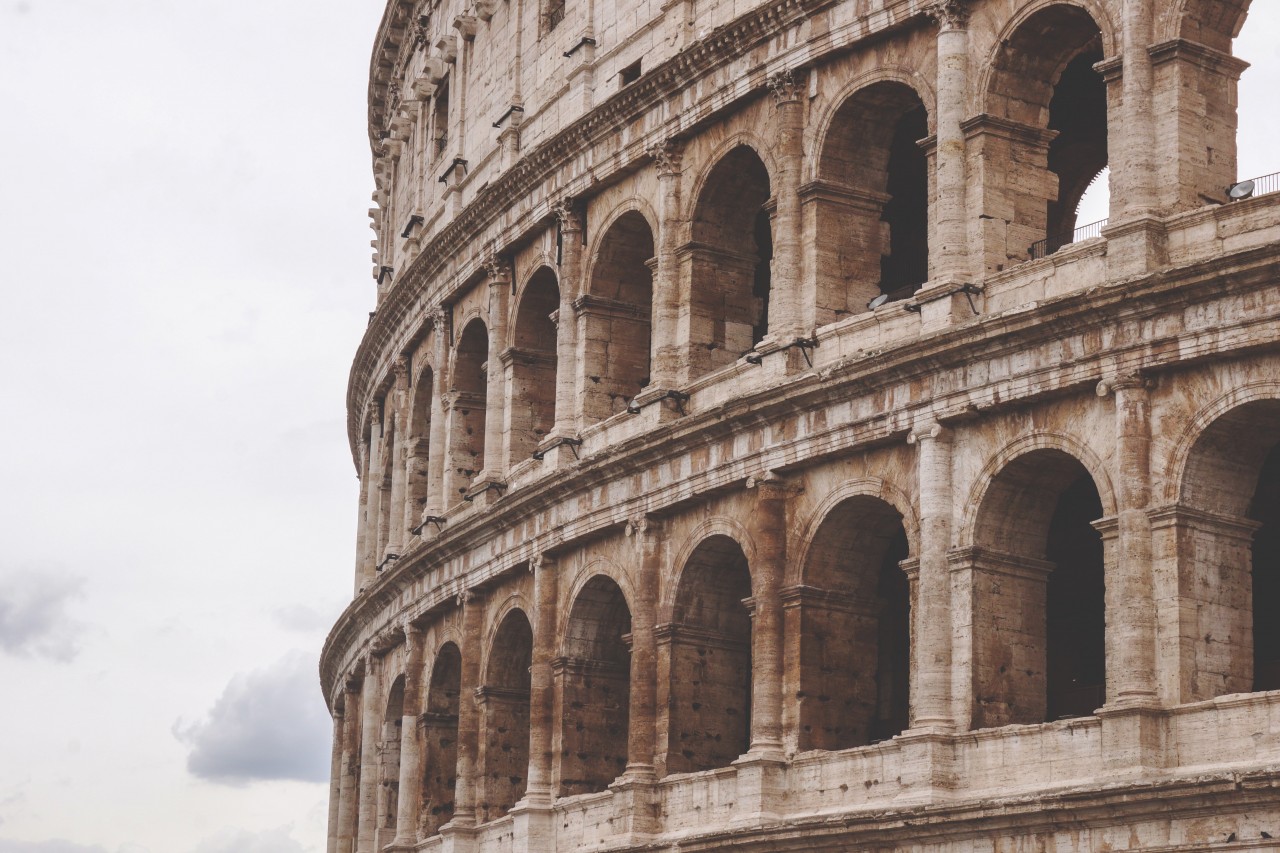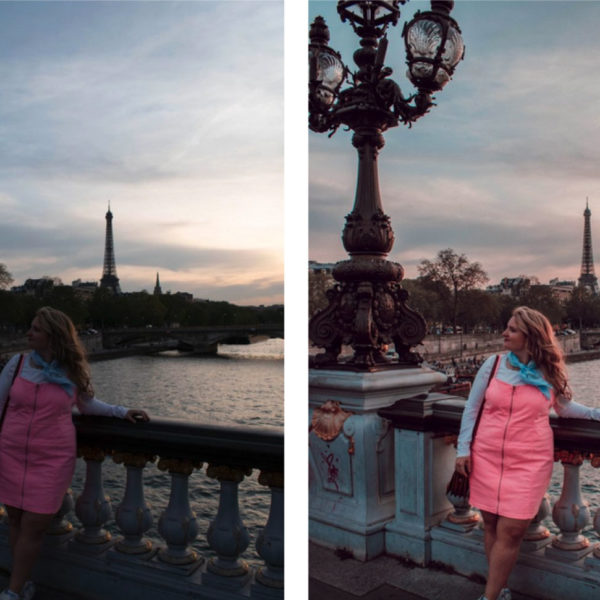I have been living in Germany for almost 2 months now. It's been an experience to say the least. From my Instagram and even on the blog, it might seem like I'm living a carefree time. It hasn't been that easy, but it has opened my eyes in a completely new way. Immersing myself in this culture and country has helped illuminate our similarities and differences. It's taught me that we are not that contrasting, but our distinctive qualities make us unique.
Today I'm letting my little sister, Louise Flournoy, take over the blog. I'm in awe of her breathtaking writing. She wrote this while studying abroad this Summer in Rome. She shares some of her travels on Instagram @thereal_weezyf_baby. I'm thrilled to share her story of how traveling teaches you to fall in love:
People travel from far and wide to trace the ancient footprints of Rome. Shrouded in magnificent artwork and historic monuments accumulated throughout centuries, it has rightfully gained its reputation as the Eternal City. Visitors gaze in wonderment at the Sistine Chapel, a masterpiece that took Michelangelo four years to paint. Mesmerized by the ruins of the Colosseum, they can envision violent gladiator battles and raucous public spectacles that served as entertainment during the Roman Empire. They stand in awe on the steps of the Pantheon, one of the world’s most influential and preserved temples dedicated to the gods of pagan Rome. These and hundreds of other sites contribute to the excitement that stirs inside people when visiting Rome. But perhaps the most alluring aspect of the city is its reputation as a center for romance.
This image has been perpetuated by classic movies set in romantic Italy, like “Summertime,” “Three Coins in the Fountain,” “La Dolce Vita,” “Roman Holiday” and “To Rome with Love” — films that all promise the prospect of love and romance, Italian style.
For Italians, romance isn’t limited to dreamy-eyed lovers. Romance takes on a far broader connotation. Romance can pertain to the city’s overall history, baked into each ancient stone. Or it can be the allure of hidden Rome, which tempts visitors to lose themselves in the quaint streets. It’s the everyday, underrated aspects of Italy that lure travelers to venture off the beaten path and truly wander. By exploring the laissez-faire, and yet passionate lifestyle Italians lead, many visitors may gain a new outlook. It might make them feel more youthful, affectionate, and adventurous. It teaches them that the destination is far less important than the journey. And it prompts them to appreciate every moment, no matter how chaotic or unpredictable.
While many famous quotes about Rome come from classic sources, one modern observation nicely sums up the essence of the city’s unique appeal, or its Bel Paese. “I love places that have an incredible history. I love the Italian way of life. I love the food. I love the people. I love the attitudes of Italians,” said musician Elton John during his performance at the Colosseum in 2005.
Stepping out on the streets of Rome in the morning, the aroma of rich coffee and sweet pastries fill the air. You’ll find this especially true in the heart of the Prati district, and its Piazza Cavour, a staple in Italian culture, surrounded by various cafes, restaurants, and markets. With towering palm trees, flowers, and benches scattered about the piazza, locals relax on picnic blankets or walk their dogs. Sitting at popular cafes, such as Obladi Oblada or Vero, Italians stir their morning cappuccino and some smoke a morning cigarette. Smiling and indulging in friendly conversation, seemingly in no hurry, they gaze into one another’s eyes, not their cell phones. No laptop or iPhone steals their attention. Whether their focus is the coffee or the company of others, it is refreshing, especially for an American observer, to note the open, honest demeanor, and the joy of simply taking in the moment, rather than giving in to technological distraction.
Travelers strolling across the Tiber River will find themselves in the vibrant neighborhood of Trastevere, often referred to as “The Real Rome.” This hidden corner of the city, with its cobblestone streets and walls covered in graffiti, offers a unique, distinct environment that captivates the imagination. Wandering around Trastevere’s many restaurants, shops, and churches, it’s easy to get lost. But visitors can get their bearings atop the steps of the Fontana in Piazza Santa Maria, a magnificent fountain located in the center of the neighborhood. Or perhaps they find themselves in the University of Rome’s Orto Botanico, a relaxing botanic garden filled with more than 700 plant species. By contrast, the noisy, active streets of a more modern section of Trastevere, provides a glimpse into the lifestyle of today’s young Romans. But they need only duck into any of the quiet, discrete alleyways with crumbling architecture to regain the feel of classic Rome.
In fact, just about anywhere a tourist might venture throughout the city, they will be immersed in beautiful scenery. The towering, old buildings boast the grandeur of Greek architecture, set against a vivid sky, with the sun or moon glistening upon the waterways by day or by night. This creates the perfect backdrop for romance, which is why loving couples seem a ubiquitous part of the scenery. Whether holding hands in parks, zooming by on Vespa’s, or kissing on street corners, it seems everyone in Rome is in love. Their affection shines through in their daily lives.
So why does their display of romance seem more obvious than what you might see in America?
Italians will be quick to answer that it’s because Americans live a hurried life, constantly scrambling to reach their next destination—work, school and endless errands. Americans, they observe, neglect to appreciate the journey, as well as whom they are with on that journey.
“Americans never stop to see what’s in front of them,” commented a waiter in a Trastevere café. “Their minds are consumed with where they are headed. Not where they are.” He noted that Americans seem to shirk off the little things, such as holding hands or engaging in simple conversation. Thus, romance can sometimes be seen as an inconvenience. But for Italian couples, expressing love, or any intimate emotion, for that matter, is a necessity. Unafraid to kiss, hug, or even fight, Roman couples relish in the passion and chaos of romance, as if to write their very own love story. And by observing their willingness to show intimacy and emotion, travelers can become inspired to do the same.
As the sun begins to set and the weather cools down in the evening, throngs of hungry Italians crowd the streets. When shop owners reopen their doors for dinner, the smell of freshly made bread, pasta, and pizza lures patrons inside. Once again, the charming, cosmopolitan area around Piazza Cavour bursts with enchanting restaurants and exciting nightlife. Spots such as Fuoco, L’Arcangelo, Camillo B, and Lumiere, become magnets for friends and families who gather to enjoy a relaxing evening.
As travelers enter the pleasant-smelling, attractive dinner spots, they are greeted by friendly waiters eager to present their Italian hospitality. A key aspect of these restaurants is the emphasis on spending time with others in a leisurely environment. Dinners often include four to six courses, and servers never rush customers. The sumptuous tastes delight the senses, all enhanced with a bottle of local Italian wine. Travelers come to understand the great Italian notion of what it means to truly live—putting loved ones, delicious food and good conversation above all else.
It’s no wonder that the medieval saying, “all roads lead to Rome,” has held up over the centuries. It is the same reason tourists make a wish as they toss a coin into the Trevi Fountain. The city’s inescapable charm offers the idea of possibility; that anything and everything can happen here. Travelers may arrive with the intention of exploring Rome’s history, art, and culture. But as they escape the expectations and stresses of their everyday lives, they find that Italy in general, and Rome in particular, demands that they explore themselves. And in doing so, they may be ignited with a fire of romance and adventure that will last long after they leave Rome.










